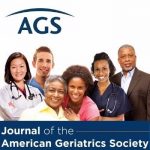 Journal of the American Geriatrics Society Research Summary
Journal of the American Geriatrics Society Research Summary
High blood pressure (also known as hypertension) is the medical term for when the force of blood against your blood vessel walls is too high. We know that using medication to lower high blood pressure can prevent heart attacks and strokes. But healthcare professionals often worry that prescriptions for lowering high blood pressure can sometimes lower it too much. This can put you at risk for becoming dizzy and falling.
Falls are a serious problem in older adults. In 2014, falls caused 2.8 million emergency room visits, 800,000 hospitalizations, and 27,000 deaths, and cost Medicare an estimated $31.3 billion.
Although some healthcare experts suspect that taking high blood pressure medication over time is linked to falls and fractures, very little research supports that belief. In fact, at least two major studies examining blood pressure reduction did not find an increased risk for falls among people taking medication to reduce high blood pressure. Other studies have not shown an increase in fracture risk for people taking medication for high blood pressure—in fact, some studies suggest that high blood pressure medicines may actually reduce the risk for fractures.
Researchers decided to learn more about the links between falls, high blood pressure, and high blood pressure medication in older women. They published their study in the Journal of the American Geriatrics Society. Continue reading
